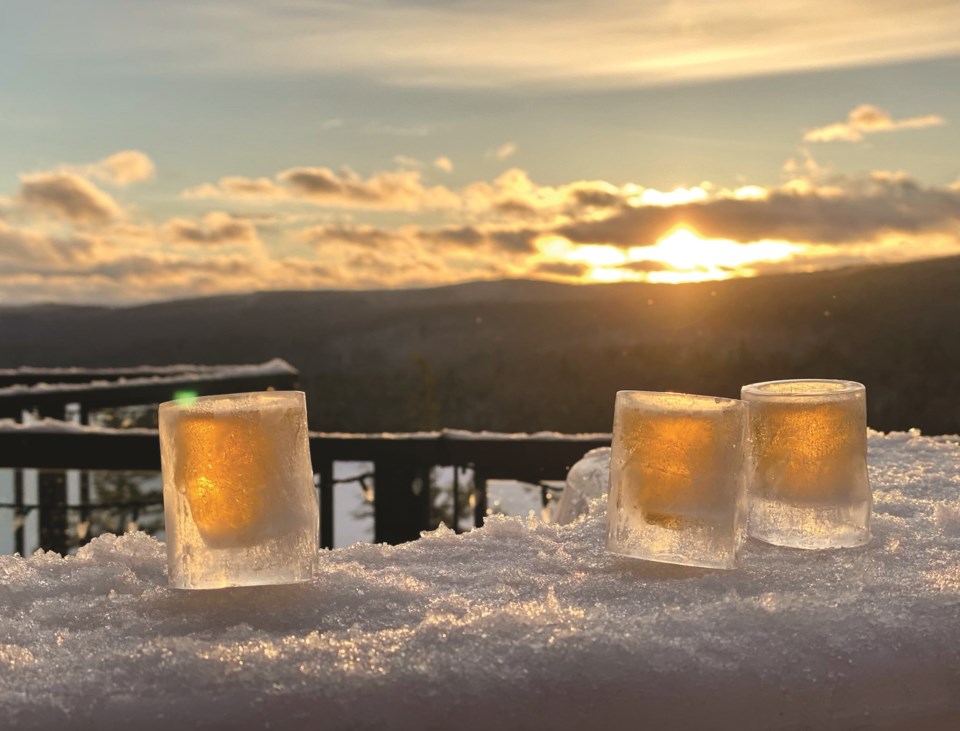In 1964, Quebec singer-songwriter Gilles Vigneault penned “Mon Pays,” whose lyrical turns on cold, snow and ice captured not only the solitude of winter landscapes, but the camaraderie of those who brave them. The song’s theme, Mon pays ce n’est pas un pays, c’est l’hiver—my country isn’t a country, it’s winter—may be a de facto provincial anthem, but it’s known throughout Canada, where most can relate to the invernal season.
Still, when it to comes to passionate snow aficionados, Quebec is on another level, reflecting not just the ardour of outdoor recreationists, but the joie de vivre that permeates life here, with its art, culture and gastronomy. Basically, winter in Quebec is wonderfully different.
I spent a month in Quebec last week—not in the sense of W.C. Fields’ infamous pejorative, but in that there was simply so much to see and do that one could easily forget how much they’d packed into a day.
Although most of my trips to Quebec revolve around alpine skiing, this time our group was à la recherche de broader palette of activities. We started in Lanaudière region northeast of Montreal, at the Val Notre-Dame monastery. Designed by renowned architect Pierre Thibault, this masterpiece of wood and slate stands in harmony with the surrounding 187 hectares of wooded hills. The monks known for Oka cheese settled here in March, 2009. As a result, the Magasin de L’Abbaye offers a range of handmade cheese, meats and other local products (pickled quail eggs!), many of which derive from the forest. Taking a snowshoe tour in a storm with a master bushman, we learned about many of these—particularly Sapin baumier, or balsam fir, used to flavour almost anything. Indeed, we landed at a yurt in the woods where a chef (the bushman’s wife, it turns out) was shilling sapin-flavoured sausages wrapped in bannock and dressed in a sapin mustard and foraged berry sauce, washed down with chaga tea (a fungus found on birch).
A more traditional lunch ensued at Auberge du Lac-à-l’Eau Claire in neighbouring Mauricie region, a classic Canadian lake-lodge. The food was good, but all our attention was on the lake—some 25-kilometres long and so extraordinarily clear in summer you can see 10 metres to the bottom. We couldn’t see anything through the lake’s metre of ice and the snow curtaining down, but we were actually here for that which couldn’t be seen. Manning a little wooden tipper beside an augured hole, we each scrunched a piece of worm onto a hook (sorry, worm), and sat down with a glass of white wine to wait (apparently white-with-fish, red-with meat applies even while obtaining dinner). From the numinous depths came spunky speckled trout which, before they’d a chance to freeze, sizzled in a pan behind us; as imagined, they tasted heavenly fresh.
Late afternoon we’d set out for our evening destination, driving through endless forest punctuated by the church steeples marking every village in Quebec. Somewhere in the wilderness we reached the log-palace aerie of Hôtel Sacacomie. Checking in—conducted outside on the deck with its commanding view of Lake Sacacomie and its cradle of ancient, hardwood-pelage mountains—was a treat. First order of business was the ritual downing of maple whisky in a shotglass made of ice, throwing it over a shoulder into the forest below and making a wish; mine was that I didn’t hit anybody—or a moose. Next was retrieving our room keys—frozen in ice-block decorations hung from a tree; once you found your number you smashed the ice with a hammer to liberate the key. Just about then, the storm was cleared off by a bully sunset, scattering us to the hot and cold comforts of Sacacomie’s Nordic Spa.
The next-day’s dog-sledding on the Sacacomie’s network of trails was exceptional—and not just because it resonated the winter forests of my Ontario childhood. More because we paired up to ride and drive the sled over several kilometres with a full team of eager but disciplined dogs. Unlike the usual pedestrian version of dog-sledding, we ripped through the forest and ran uphill with the dogs out, occasionally tipping the sleds around corners and generally having a blast figuring out how/when to let ’em run and when to brake.
The afternoon was a lesson in survival in the bush in winter, and those who materialized to lead it could only be found in Quebec: 70-something Gaspar appeared truly a man of the previous century, bedecked in an antique coat of sea otter with a raccoon/beaver hat… flanked by his son in a onesy snowmobile suit. While junior instructed us on lighting a fire with birchbark, carrying a whistle and Labrador tea to brew, Gaspar explained the contents of a trapper’s cabin, and how beaver skins were tanned with bear brains—perfect prelude to eating hot maple rendered into taffy sticks on snow. This was le vrai chose, yet we were only scratching the surface. Mostly because Gaspar was just getting started: his old-school speeches ranged from an emotional tribute to the region to treatises on First Nations (“Amerindians,” in his old-school parlance), to Americans liberating the world, to little Jesus creating everything, to logging, trapping and existential gratitude. “Life,” he concluded, sweeping his arms wide as another molten sunset turned the surrounding snow fuchsia, “is beautiful.”
If that wasn’t joie de vivre, I don’t know what is.
Next time: Quebec City and the Saguenay region.
Leslie Anthony is a Whistler-based author, editor, biologist and bon vivant who has never met a mountain he didn’t like. n




